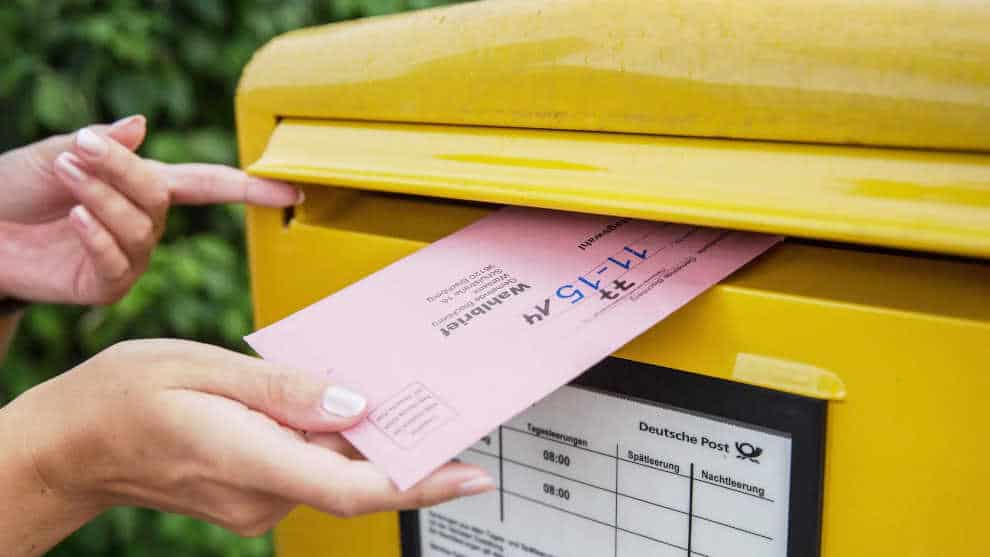I think I recognize this voice…..I'm glad he thinks it is a challenge. Should they try to change the Constitution in any way not prescribed in the Document itself then his idea if "governing" is going to get a lot more challenging.
Join the Hide community
Get access to live stream, lessons, the post exchange, and chat with other snipers.
Register
Download Gravity Ballistics
Get help to accurately calculate and scope your sniper rifle using real shooting data.

Install the app
How to install the app on iOS
Follow along with the video below to see how to install our site as a web app on your home screen.
Note: This feature may not be available in some browsers.
You are using an out of date browser. It may not display this or other websites correctly.
You should upgrade or use an alternative browser.
You should upgrade or use an alternative browser.
PortaJohn
- Thread starter Lowlight
- Start date
-
- Tags
- sniper's hide
This dude says it point blank…,I appreciate his candor. It allows me the luxury of making clear and informed choices about the future around the NWO folks and their initiatives.
ignorant cunt.

 www.dailymail.co.uk
www.dailymail.co.uk

Jen Psaki slammed for saying Doug Emhoff 'reshaped masculinity'
Jen Psaki has been slammed after praising Doug Emhoff for 'reshaping the perception of masculinity,' even after it was exclusively revealed that he had an affair with his children's nanny.
still going...rob schneider kicked it off and was good. haven't been watching...


Last edited:
Mostly peaceful..."There was a small fire on the roof, which has been contained, but at that time, right now, there are no other issues,” McDaniel said.
Ummm...
every fraudulent or disqualified vote erases the real vote of a real american citizen and undermines our democratic republic.


he flips the bird like a faggot.
Not a purple hair in the group
don't see metal or ink either-a VG thing
Not a purple hair in the group
It’s also real women, not mentally ill men.
Well, he is one so...he flips the bird like a faggot.
How does the illegal aliens counts keep dropping by millions every time they talk about it?
It was over 12M a year ago. Now it's 8M?
That's just Arizona. Don't forget how many are coming through Texas and California.
Safety safety safety! Desantis is a fucking shitstain if he doesn't do something about this shit.

Nevermind. It's a state law.

Nevermind. It's a state law.
Last edited:

Georgia chemical lab fire prompts evacuations, shelter-in-place orders for entire county
Manufacturer KIK Consumer Products said it was responding to the incident at its facility, BioLab, in Conyers. No injuries among employees were reported.www.nbcnews.com
FYI five days ago:
BEIRUT (AP) — Two U.S. airstrikes in Syria killed 37 militants affiliated with the Islamic State group and an al-Qaeda-linked group, the U.S. military said Sunday. It said two of the dead were senior militants.
U.S. Central Command said it struck northwestern Syria on Tuesday, targeting a senior militant from the al-Qaeda-linked Hurras al-Deen group and eight others. They say he was responsible for overseeing military operations.
On Sept. 16, a “large-scale airstrike” on an IS training camp in an undisclosed location in central Syria killed 28 militants, including “at least four Syrian leaders,” Central Command said.
U.S. Central Command said it struck northwestern Syria on Tuesday, targeting a senior militant from the al-Qaeda-linked Hurras al-Deen group and eight others. They say he was responsible for overseeing military operations.
On Sept. 16, a “large-scale airstrike” on an IS training camp in an undisclosed location in central Syria killed 28 militants, including “at least four Syrian leaders,” Central Command said.
I though Cameltoe Harris said there were no US soldiers in any hot zone anywhere in the world. Did she lie? Fake news!!BEIRUT (AP) — Two U.S. airstrikes in Syria killed 37 militants affiliated with the Islamic State group and an al-Qaeda-linked group, the U.S. military said Sunday. It said two of the dead were senior militants.
U.S. Central Command said it struck northwestern Syria on Tuesday, targeting a senior militant from the al-Qaeda-linked Hurras al-Deen group and eight others. They say he was responsible for overseeing military operations.
On Sept. 16, a “large-scale airstrike” on an IS training camp in an undisclosed location in central Syria killed 28 militants, including “at least four Syrian leaders,” Central Command said.

Taxpayer-Funded Minneapolis Food Pantry Bans Whites From Accessing Resources | The Gateway Pundit | by Miriam Judith
A taxpayer-funded food pantry in Minnesota has come under fire after it was revealed that the owner attempted to block white people from accessing the resources.

Iran Targets Trump Force One, National Security Apparatus Shows Little Alacrity | The Gateway Pundit | by John Mills
The drama, danger, and stakes of Election 2024 have now multiplied exponentially to grave and mortal levels.
Who would have taught that mail in ballots have been systematically used to commit election fraud for decades
 Not the exception, but the rule: systematic electoral fraud in Germany
Not the exception, but the rule: systematic electoral fraud in Germany
The renowned scientist Prof. Jochen Renz has examined the election results of the last few years. The result is shocking and suggests that elections in Germany have been rigged on a large scale for decades.
by Prof. Jochen Renz
In the 2016 Austrian presidential election, there were a noticeable number of invalid postal votes in some constituencies in the second round compared to the first round. Since there were a number of such anomalies, the entire election was repeated. During the investigation into possible election fraud, some "sloppiness" was uncovered, particularly with postal votes. For example, ballot papers were often opened before the counting and in some cases pre-sorted.
Both are prohibited under electoral law, as they would make manipulation possible.
It is not surprising that postal votes are easier to manipulate than ballot votes. In ballot votes, ballot papers are counted immediately after the election has ended, so there is not much opportunity for manipulation. In postal votes, on the other hand, ballot papers usually remain in the town hall for several days and sometimes weeks before they are counted. In the days and weeks before the election, new ballot papers are added every day, so there must be constant access to ballot papers that have already been received. Postal ballot papers are then counted, unlike in ballot votes, and are not taken directly from the ballot box, which is under observation throughout election day. In addition, the counting of postal votes sometimes takes place separately from ballot votes and may not be possible for election observers to see them. In addition, it is not possible to check who filled out the ballot paper.
In the 2017 federal election, 28.6% of votes were cast by postal vote, a total of 13,430,468 ballot letters. Due to this volume, postal votes can play a decisive role in the outcome of the election and can potentially have a strong influence on an election.
In the following, we examine whether there were statistical anomalies in federal elections, particularly with regard to postal votes, similar to those in Austria, that could indicate electoral fraud. We compare all federal elections since 1990 and the 2014 European elections. This makes it possible to observe long-term trends in voter behavior, particularly differences between postal voting and ballot voting, and to find any irregularities that contradict the long-term trends. In doing so, we come to some astonishing results.
There are two irregularities that not only strongly contradict long-term trends, but also had a decisive influence on the election outcome. In both cases, electoral fraud seems possible. It is noteworthy that in both cases important information is not publicly available that would indicate the discrepancies, but which is available in other elections.
Such an analysis is not possible in Germany immediately after an election and before the official two-month objection period has expired, as the Federal Election Ordinance does not provide for a distinction between postal voting and ballot voting. The relevant data is either not published at all in Germany, or sometimes only published years after the election. Irregularities such as those in the Austrian presidential election cannot therefore be discovered in time in Germany.

 www.anonymousnews.org
www.anonymousnews.org
Elections in Germany: Professor proves systematic fraud
26 September 2024
The renowned scientist Prof. Jochen Renz has examined the election results of the last few years. The result is shocking and suggests that elections in Germany have been rigged on a large scale for decades.
by Prof. Jochen Renz
In the 2016 Austrian presidential election, there were a noticeable number of invalid postal votes in some constituencies in the second round compared to the first round. Since there were a number of such anomalies, the entire election was repeated. During the investigation into possible election fraud, some "sloppiness" was uncovered, particularly with postal votes. For example, ballot papers were often opened before the counting and in some cases pre-sorted.
Both are prohibited under electoral law, as they would make manipulation possible.
It is not surprising that postal votes are easier to manipulate than ballot votes. In ballot votes, ballot papers are counted immediately after the election has ended, so there is not much opportunity for manipulation. In postal votes, on the other hand, ballot papers usually remain in the town hall for several days and sometimes weeks before they are counted. In the days and weeks before the election, new ballot papers are added every day, so there must be constant access to ballot papers that have already been received. Postal ballot papers are then counted, unlike in ballot votes, and are not taken directly from the ballot box, which is under observation throughout election day. In addition, the counting of postal votes sometimes takes place separately from ballot votes and may not be possible for election observers to see them. In addition, it is not possible to check who filled out the ballot paper.
In the 2017 federal election, 28.6% of votes were cast by postal vote, a total of 13,430,468 ballot letters. Due to this volume, postal votes can play a decisive role in the outcome of the election and can potentially have a strong influence on an election.
In the following, we examine whether there were statistical anomalies in federal elections, particularly with regard to postal votes, similar to those in Austria, that could indicate electoral fraud. We compare all federal elections since 1990 and the 2014 European elections. This makes it possible to observe long-term trends in voter behavior, particularly differences between postal voting and ballot voting, and to find any irregularities that contradict the long-term trends. In doing so, we come to some astonishing results.
There are two irregularities that not only strongly contradict long-term trends, but also had a decisive influence on the election outcome. In both cases, electoral fraud seems possible. It is noteworthy that in both cases important information is not publicly available that would indicate the discrepancies, but which is available in other elections.
Such an analysis is not possible in Germany immediately after an election and before the official two-month objection period has expired, as the Federal Election Ordinance does not provide for a distinction between postal voting and ballot voting. The relevant data is either not published at all in Germany, or sometimes only published years after the election. Irregularities such as those in the Austrian presidential election cannot therefore be discovered in time in Germany.

Wahlen in Deutschland: Professor beweist systematischen Betrug bei Briefwahlstimmen
In Deutschland werden Wahlen seit Jahrzehnten gefälscht. Zu diesem Ergebnis kommt ein renommierter Wissenschaftler.
You still gotta make cakes!!!
Taxpayer-Funded Minneapolis Food Pantry Bans Whites From Accessing Resources | The Gateway Pundit | by Miriam Judith
A taxpayer-funded food pantry in Minnesota has come under fire after it was revealed that the owner attempted to block white people from accessing the resources.www.thegatewaypundit.com
So that #3, pretty much nullifies CWP in Florida during emergency - the way I read it. I'll have to research this...is this new or has it always been a statute?Safety safety safety! Desantis is a fucking shitstain if he doesn't do something about this shit.
View attachment 8513624
Nevermind. It's a state law.
View attachment 8513631
Last edited:
She's middle class ya know:

 www.thegatewaypundit.com
www.thegatewaypundit.com

Kamala Harris Torched For Wearing $62,000 Tiffany Necklace During Border Visit Photo Op | The Gateway Pundit | by Cristina Laila
Kamala Harris visited the border on Friday for less than 20 minutes after she oversaw the biggest invasion of illegal aliens in US history.
They all look so native to the area

Israel Targets Houthis in Yemen Strikes
The Israel Defense Forces has also conducted strikes against Hezbollah in Lebanon that included taking out the terrorist group’s leader, Hassan Nasrallah.
The article says that King Poopy Pants could intervene to stop the strike. However, I don't think he will do that. Kameltoe and Bama won't let him. They want the union vote to win the election.
That could backfire when people start going hungry and can't afford groceries. So never interrupt your enemy while they are making a mistake.
The US could see shortages and higher retail prices if a dockworkers strike drags on
A lengthy shutdown could raise prices on goods around the country and potentially cause shortages and price increases at big and small retailers alike.
Similar threads
- Replies
- 1
- Views
- 572


